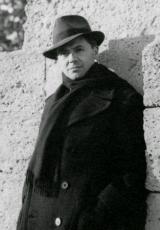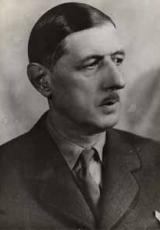27 May

National Resistance Day
BACKGROUND
In the summer of 1940, resistance movements against the Nazi occupation of France began to spring up all over the country. Following General de Gaulle’s call to arms, made on 18 June over the airwaves of the BBC, soldiers and civilians made their way to England to join de Gaulle’s ‘Free France’. A number of colonial territories in Africa, Asia and Oceania joined them over the months that followed. In metropolitan France, which was partly, then entirely, occupied by the German army (in October 1942), the resistance movements saw their ranks swell as time went by, due to the harshness of the German occupation, a rejection of Vichy policy, the breach of the German-Soviet pact or the refusal to participate in compulsory labour service. Yet they remained very isolated and their actions suffered greatly as a result of lack of coordination. Meanwhile, Free France needed to be officially recognised by the resistance movements if it was to gain legitimacy in the eyes of the Allies.
Against this backdrop, in early 1942, General de Gaulle gave Jean Moulin - a prefect under the Third Republic, who was removed from office by the Vichy regime - the mission of rallying and uniting the main resistance movements to form a veritable ‘secret army’, to operate within occupied territory under a single command. The first meeting of the National Council of the Resistance (CNR) was held on 27 May 1943, and brought together in the same room Jean Moulin, representing General de Gaulle, representatives of the eight main French resistance movements (Ceux de la Libération, Ceux de la Résistance, Combat, Libération-Nord, Libération-Sud, Organisation Civile et Militaire, Franc-Tireur and Front National de la Résistance) and representatives of the main political parties and unions in existence before the war. Together, they were to coordinate the actions of the Resistance and even to make preparations for the refounding of the Republic, in the event of the liberation of France.
THE IMPORTANCE OF REMEMBRANCE
On 19 July 2013, the National Assembly voted unanimously to pass a bill from the Senate establishing 27 May as National Resistance Day. The day, whose date was chosen in reference to the first meeting of the National Council of the Resistance (CNR), on 27 May 1943, offers an opportunity to reflect on the values of the Resistance and those set down in the CNR’s programme.
Its purpose is educational and it prompts teachers to address the issue in class.
In Paris, a ceremony is sometimes held in Rue du Four, before the site of the CNR’s first meeting.



